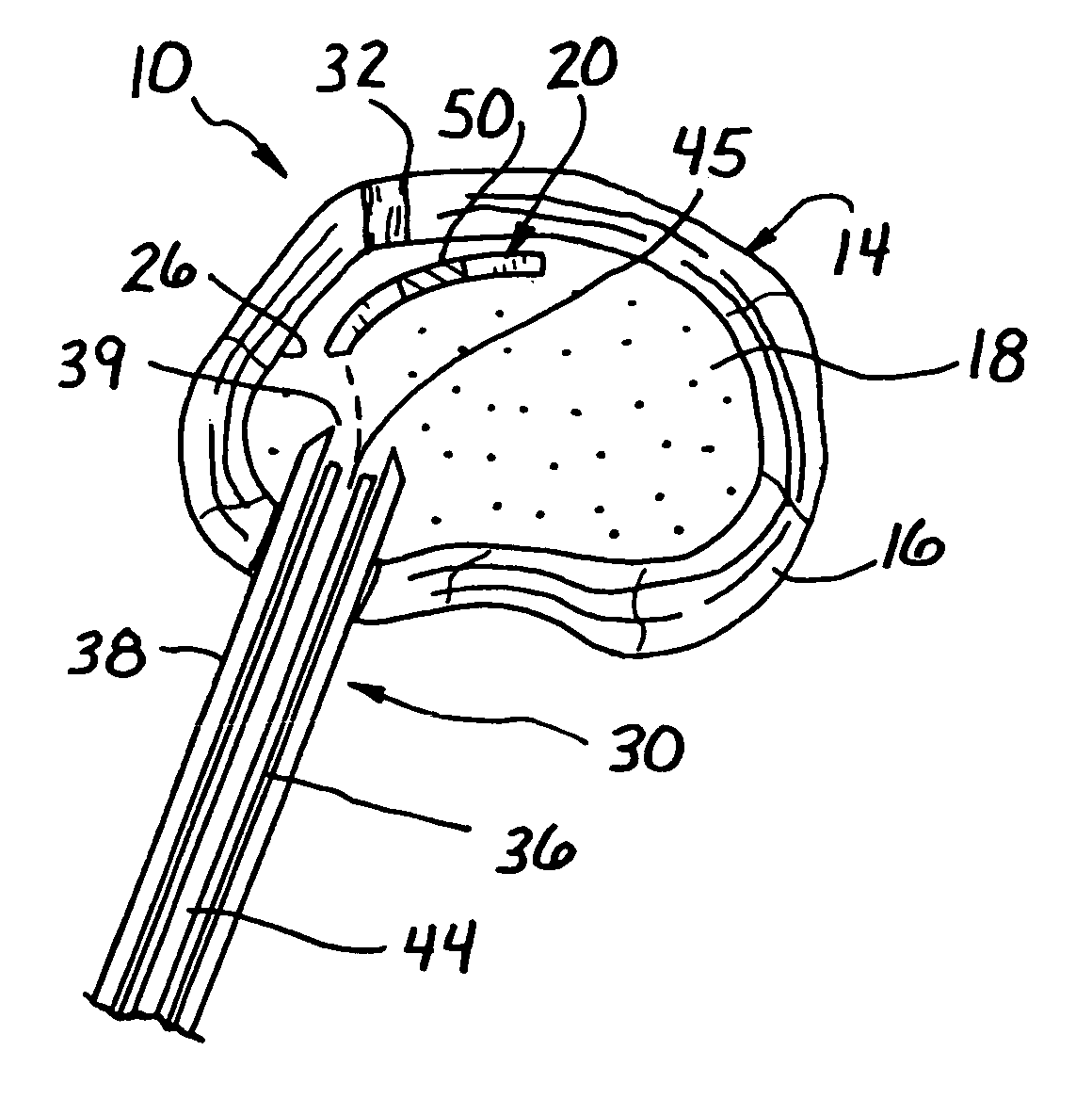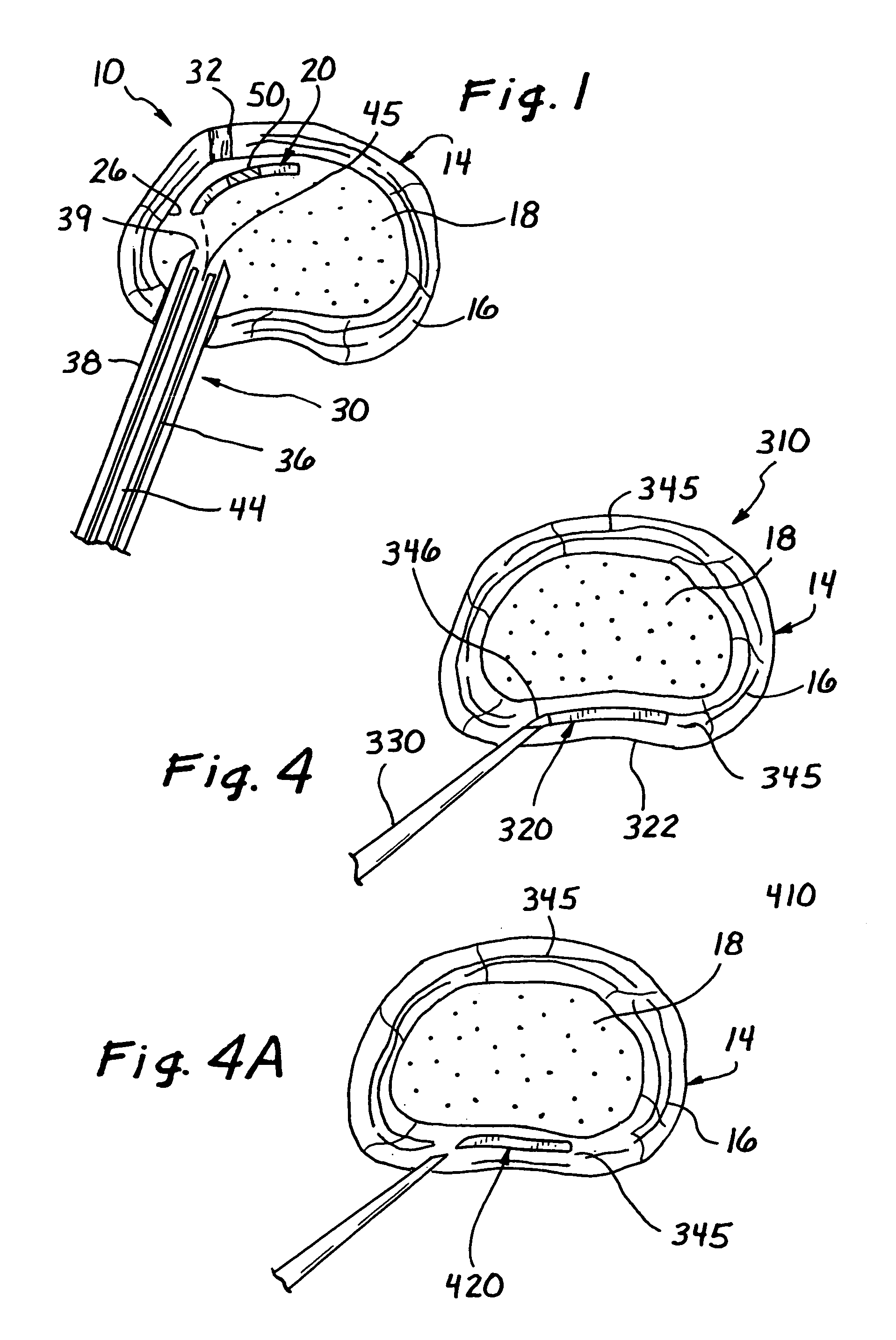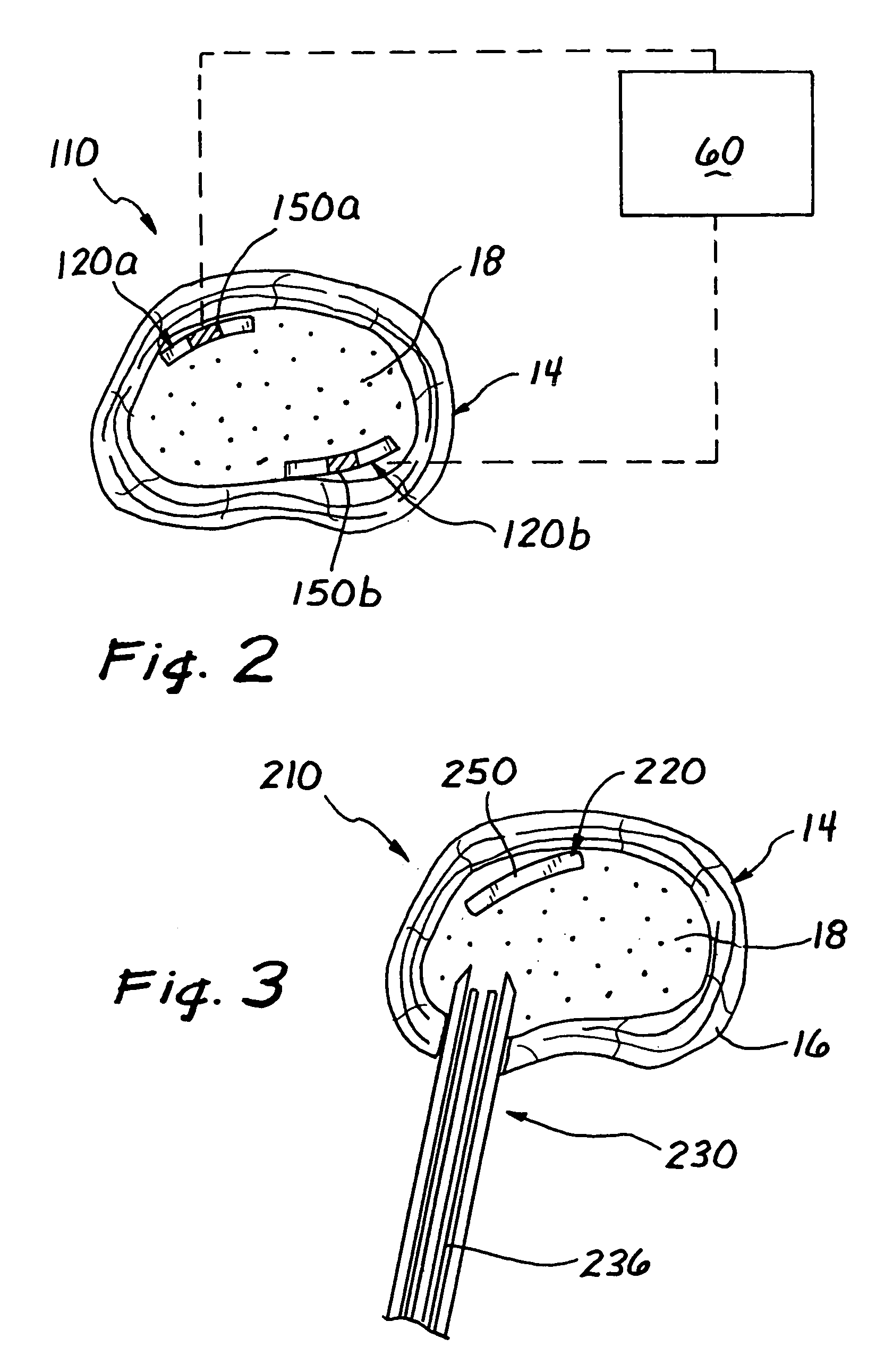Spinal disc therapy system
a technology of spinal discs and spines, applied in the field of spinal disc therapy systems, can solve the problems of difficult treatment, serious back pain and physical disability, and discs are subject to injury, and achieve the effect of substantially minimally invasive, straightforward structure, and relatively easy placement or implanting in the intervertebral discs
- Summary
- Abstract
- Description
- Claims
- Application Information
AI Technical Summary
Benefits of technology
Problems solved by technology
Method used
Image
Examples
Embodiment Construction
[0037]Turning now to FIG. 1, a spinal disc therapy system, in accordance with the present invention, is shown generally at 10 and is shown located in an intervertebral disc 14 of a human or animal patient.
[0038]Generally, the intervertebral disc 14 includes an outer ligamentous ring, or annulus fibrosis, (hereinafter referred to as the “annulus 16”), and an inner nucleus pulposus (hereinafter referred to as the “nucleus 18”).
[0039]The annulus 16 of an intervertebral disc 14 is comprised of cells (fibrocyte-like and chondrocyte-like), collagen fibers and non-fibrillar extracellular matrix. The components of the annulus 16 are arranged in about 15 to about 25 lamellae around the nucleus 18. The fibers in the lamellae alternate their direction of orientation by about 30 degrees for each band.
[0040]Preferably, the system 10 in accordance with the invention comprises an implant element 20 sized and structured to be placed in the intervertebral disc 14, for example, within the disc nucleu...
PUM
 Login to View More
Login to View More Abstract
Description
Claims
Application Information
 Login to View More
Login to View More - R&D
- Intellectual Property
- Life Sciences
- Materials
- Tech Scout
- Unparalleled Data Quality
- Higher Quality Content
- 60% Fewer Hallucinations
Browse by: Latest US Patents, China's latest patents, Technical Efficacy Thesaurus, Application Domain, Technology Topic, Popular Technical Reports.
© 2025 PatSnap. All rights reserved.Legal|Privacy policy|Modern Slavery Act Transparency Statement|Sitemap|About US| Contact US: help@patsnap.com



